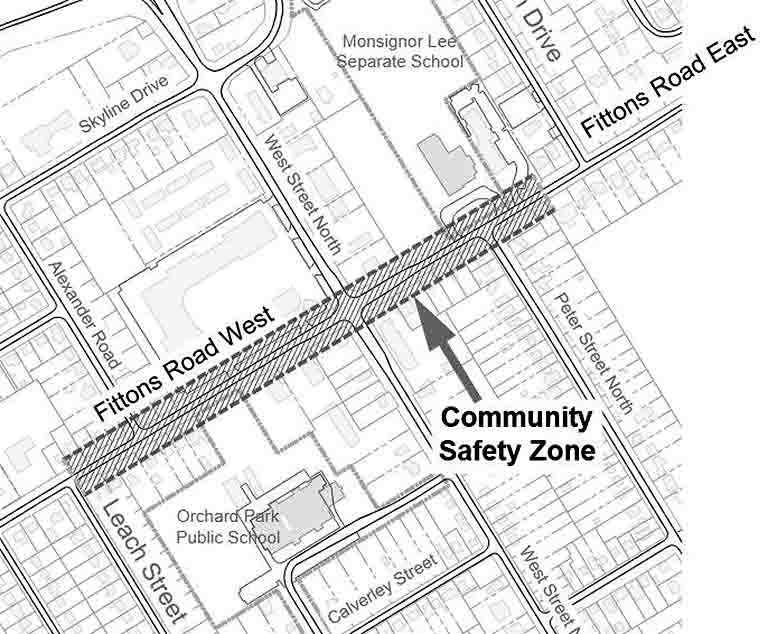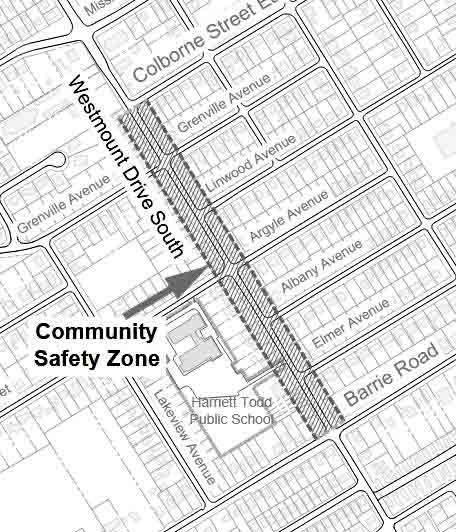Council Preview
By John Swartz
Orillia council meets Monday, April 27 at 2 p.m. The top of the meeting has a presentation by Matt Thomson, Allison Hansen, and Aiesha Aggarwal of the Mariposa Ecological Initiative. They will speak to council about rodenticide, which is what you’d think it means, getting rid of rodents, but specifically with chemical compounds, poisons.
This group is opposed to using poisons because they do not work instantaneously and other animals catch, eat the rodents, and die. Studies have shown the poisons are present in animals the poisons are not intended for along the food chain. They are also harmful to children and pets. They would like the City to stop using poisons in municipal facilities and ban the sale of poisons for pest elimination in Orillia.
They instead say there are other methods that can work, despite those methods maybe being more costly. This group will present documents for Rodenticide Free Ontario which is working toward a provincial and federal ban of the poisons.
The public forum portion of the meeting follows and leads into the closed session.
The closed session agenda has 6 items listed. One is a legal matter regarding the last phase of Laclie Street reconstruction (more below). Council will also be choosing this year’s recipient(s) of the Order of Orillia.
They also have a staffing update, and discussion about property the City might buy and City property being sold.
It’s interesting to observe over the last 5 years there are fewer details about the topics of discussion in closed session than there used to be. This leaves everyone in the dark about what the City is doing because too often the motions brought to open sessions also lack detail (usually worded as motions to adopt decisions of closed session). Properties get sold and we don’t know which ones or who is buying. The City buys land and we don’t know where or for what purpose, and many other instances where some detail puts some light on what is happening without spilling and beans which should remain confidential.
Case in point, back in 2014 an item appeared about a monument for Tudhope Park. No other details given. At least the public would know something interesting was being planned. A little bit of sleuthing revealed it was the Golden Leaves Gordon Lightfoot statue was the subject. The confidential part was who was paying for it, private or public funds and how much. What it was about and finding out did not harm the project. The bottom line is at least the public knew something before everything was a done deal and the City made some big announcement before anyone else could have input. Supposing it was a statue by an artist who was known to make controversial sculptures, or was dedicated to a controversial figure. Some things do need to be revealed and can be done so without harming confidentiality.
Reports
The development services and engineering department has an overview of the results from the housing needs assessment study. Every city in Canada with a population greater than 30K is required to do an assessment if they want to get federal funding for housing projects. Orillia will have access to $11 million between now and 2028 for infrastructure funding.
The study was formatted according to federal stipulations and used data from 2021. Some of the things they found are:
- Orillia’s population increased from 31,166 in 2016 to 33,441 in 2021
- That increase resulted in 945 new housing units
- There was a shortage of 756 housing units for the amount of population increase
- The prior two bullet points were based on federal projection methods and not what actually happened, so staff say the shortage is lower, but staff do not say how much.
- Based on projections, Orillia will need 18,217 housing units built by 2031 to house a population expected to be 42K
- Orillia’s single parent household demographic is 25%, Barrie’s is closer to 20% and the County is at 16%
- Data shows there are 110 people in Orillia’s shelter system, half of which are children
- In 2024, stats showed there were 1080 people homeless in the county, 20% of those in Orillia
- The average household income in Orillia is $83K compared to the County at $110K
- Based on market rental rates an income of $75K is needed to spend only 30% of income on rent
- 26% of households (48% of the population) spent more than 30% of income on rent in Orillia
- 2023 data shows new rental units cost $1850 per month, while the average in Orillia for older stock was $1100
The City created a Poverty Reduction Working Group late last year to begin strategizing based on the City’s poverty reduction action plan and housing needs assessment data. Their first meeting was in February. They will develop short, medium, and long-term actions from the 178 listed in the plan council adopted. The deadline to report back to council is the end of this year.
What is clear is incomes are lower in Orillia and the cost of housing is higher.
Laclie Street
The last phase of Laclie Street reconstruction, Fittons Road to Murray Street, was originally to begin this year. It has been delayed until 2027 based on original information there were some property issues still pending and not expected to be resolved soon.
It turns out, according to staff, they are still designing the road. Council chose to rebuild at three lanes with bike lanes and sidewalks. This would require almost twice the width of roadway as current.
If that remains the case 8 hydro poles need to be moved, 460 meters of Bell fibre needs to be moved (it was just installed two years ago, after phase one began and one would think knowing expanding the roadway was going to happen would have been taken into account), and 270 meters of Rogers equipment would need to be moved.
There will also be some significant loss of driveways and parking on adjacent properties.
The recommended option is part of the closed session agenda. An alternative choice is to remove bike lanes from the plan. Staff did a count of bike traffic in August 2021 at Fittons and Laclie and found no bike traffic. That may be because the only people crazy enough to use bikes on the minefield called Laclie Street were both out of town those days. Also, the current provincial government does not like bike lanes. Despite the legislation not being passed yet, there might be a problem getting approval for bike lanes anyway.
Taking out bike lanes from the plan means changing the environmental assessment, which means more public meetings. Maybe the project will be done by the end of the decade.
Speed Cameras
Staff are reporting delays with installing the cameras because of the ice storm and elections. The report will change the parking and traffic by-law to change school zones where cameras will be installed to community safety zones. Safety zones can be 24 hours a day, 7 days a week with lower speed limits (and higher fines), which are going to be 40 kph, instead of just during school hours.
The safety zones are:
- Fittons Road East, from West Street to 50 metres east of Jamieson Drive
- Westmount Drive from Colborne Street West to Barrie Road
- All of Park Street
Speed cameras will be installed somewhere inside those boundaries.
The Bus Stops Here
Council has a report from development services and engineering recommending a change in service for the bus stop on the northbound route at Lakehead University.
The southbound route does go into the campus, but students have to walk out to and up University Avenue to get to the nearest stop for the northbound route. The northbound route does go into the campus at night, only because there is less traffic to cross on leaving the campus. A new stop light has been installed and the bus can make left hand turns safely all day now.
In order to change the route to go into the campus three other bus stops (Arthur Street at Woodside Drive, Woodside Drive at Sandra Drive, and University Avenue at the Costco entrance) will need to be eliminated because travel time into the campus adds 8 minutes. The motion is to do a trial and report back on the results of feedback.
Branching Out
The City had a moratorium charging fees to bringing fallout from the ice storm to the landfill until April 26, and the City was doing curbside collection. Looking around town, it’s clear there is still a lot of broken branches to pick up, and if one listened carefully on the weekend the sound of chainsaws in the air meant many people are still clearing debris.
The environment and infrastructure services department has a report recommending extending the fee waiver until May 31, and staff say curbside collection of debris will take longer and staff will report back at the end of May.
Garbage was being collected tag free until April 19 Staff say in the first three days of the tag free period 145 tonnes of waste and spoiled food was collected. A normal month’s average total is 210 tonnes.
Staff estimate lost tipping fees and payments to contractors for cleanup will cost between $400k and $600K (contractor fees can be recovered from the province emergency grant funding.
Taxes
Council has several by-laws relating to adopting the 2025 budget they will deal with toward the end of the meeting. Staff has a report for council to set tax ratios for several classes of properties. Ratios are set relative to residential property tax rates, and are higher.
Assessment growth in 2025 is expected to be $1.1 million; that’s new properties added to the tax roll. Residential property owners (houses) account for 66% of taxes collected.
Enquiries
There are three motions. Mayor Don McIsaac wants staff to report on the feasibility and costs to install a flagpole at Couchiching Beach Park. Councillor Ralph Cipolla would like a report on feasibility and costs of creating a commemorative crosswalk, Veterans’ Walkway, near the Royal Canadian Legion Branch 34. Councillor Tim Lauer wants a report about how to restore the tree canopy lost during the ice storm.
Council meetings are open to the public or can be watched on the City’s Youtube channel.
(Photos by Swartz – SUNonline/Orillia; Images Supplied)







